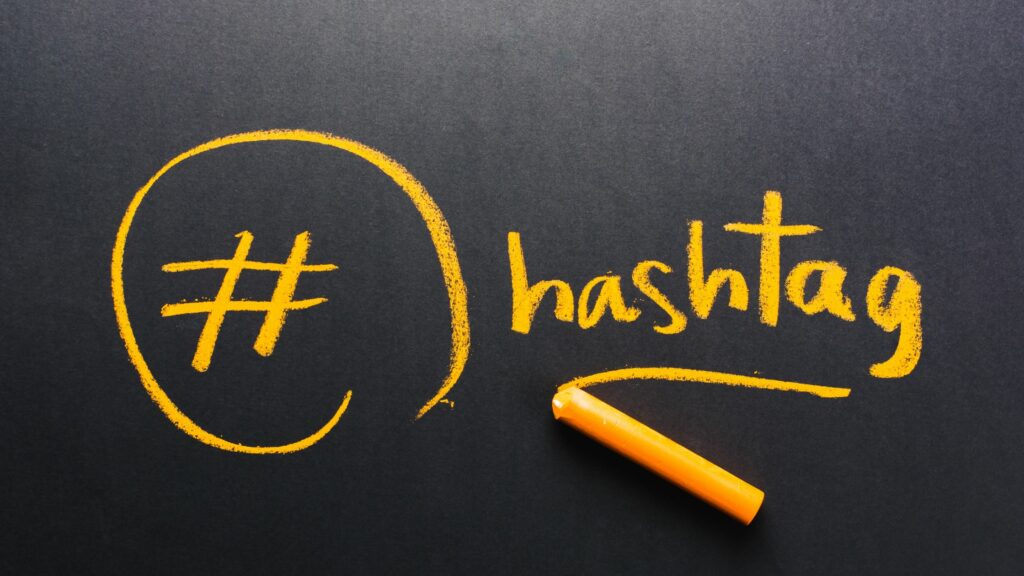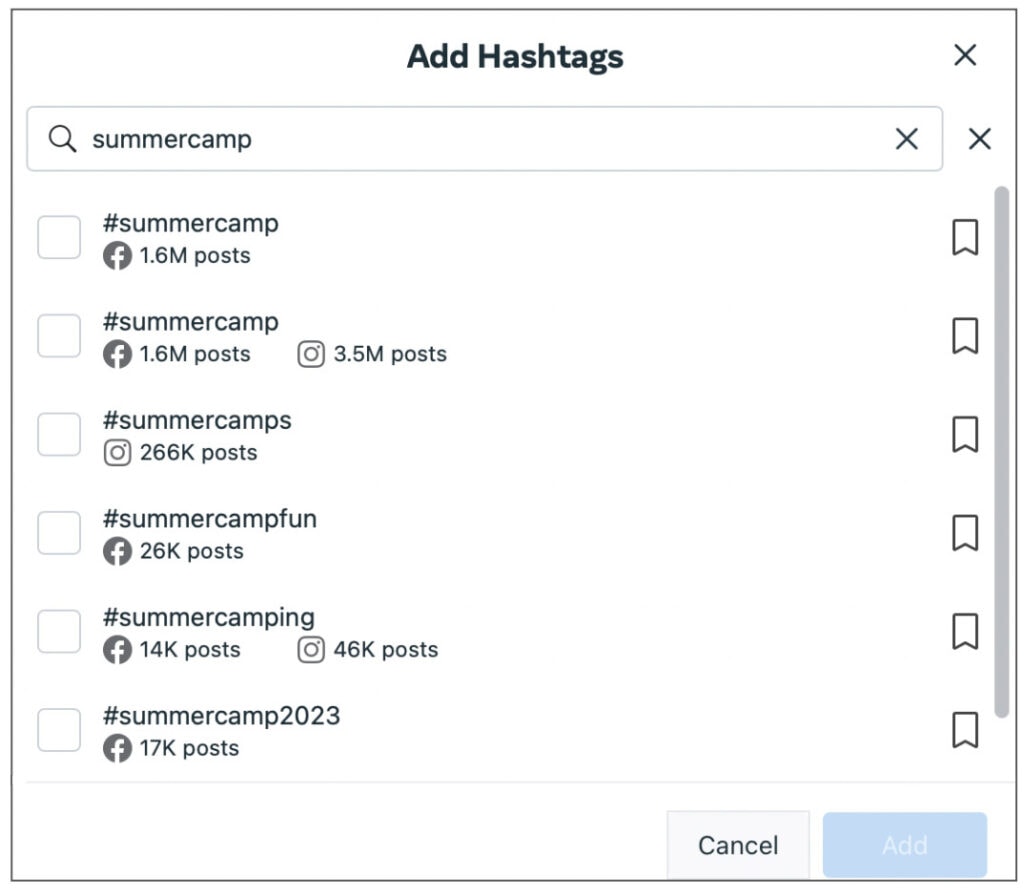
Ahhh hashtags – the tiny yet mighty symbols that have revolutionized how we communicate on social media. They’re like little digital passports that can take your content to new heights…or leave it stranded in social media oblivion.
Hashtags are a great way to categorize content, make it more discoverable, and increase its reach, but using them can be confusing. What hashtags work well? Which ones don’t? How many do you use? Are hashtags dead?
Don’t worry – we’re here to help. Here are some basic guidelines to help you get started. So sit back, grab a cup of coffee or kale and pineapple smoothie (tastes much better than it sounds), and let’s dive into the fascinating world of hashtags.
Keep it relevant:
The most important thing to remember when using hashtags is to keep them relevant to your content. Don’t use a bunch of random hashtags that have nothing to do with your post. Use hashtags that accurately describe your content and will help your target audience find you.
Posting about the best s’mores recipe ever? Use hashtags like #foodie, #smores, #smorestime, or #campingfood, and then tag us so we can see it too (@ultracamphq).
Use a variety of hashtags:
There are three main types of hashtags: those that are very popular, those that are moderately popular, and those that are specific to a niche. Each type has pros and cons, but you can get the most out of social media by using a mix of them.
- Popular hashtags are those that have been used millions of times on the platform. These hashtags can give your content an initial burst of activity but are also highly competitive. That means your content may get buried quickly in the feed.
- Moderately popular hashtags have been used thousands to tens of thousands of times on the platform. These hashtags may not give your content the same initial boost as the super popular hashtags, but they can keep your content active for hours or even days after you post it.
- Niche-specific hashtags are relevant or specific to your industry or program. These hashtags may have a smaller audience but are also more targeted. That means that people who find your content through these hashtags are more likely to be interested in your products or services and engage with you. Example: #surfcamp, #workatcamp, #campcounselor, or #kidscamp.

Try branded hashtags:
If you’re promoting your camp, company, or brand, consider using a branded hashtag. This can increase brand awareness and encourage user-generated content. For example, Coca-Cola uses the hashtag #ShareACoke to encourage people to share photos of themselves drinking Coca-Cola products.
In 2015, REI kicked off a social movement using the hashtag #OptOutside, urging people to enjoy the outdoors on Black Friday instead of getting caught up in the yearly shopping frenzy. Although not a brand-specific hashtag, it aligns with REI’s values, and has over 19 million Instagram posts featuring the hashtag.

Finding hashtags to use:
Aside from searching manually on each platform, there are many websites that can help you find the best hashtags for a topic. Some of the popular ones include Hashtagify, Tagsfinder, Best Hashtag, and All Hashtag.
Just type in a keyword or phrase related to your topic, and they’ll give you a list of hashtags you can use in your social media posts. Many will also show how popular and active each hashtag is, helping you choose the ones that will work best for your marketing strategy.
Use hashtags on multiple platforms:
If you want to get the most out of hashtags, use them on every platform that allows them. While the rules for using hashtags may differ slightly between platforms, the basic principles still apply. Keep your hashtags relevant and specific, and don’t overdo it.
- Twitter: Using 1-2 relevant hashtags per tweet is best, keeping them short and simple.
- Instagram: You can use up to 30 hashtags per post, but keep them relevant to the content and avoid overly general or spammy tags. Typically 5-10 relevant hashtags are best.
- LinkedIn: Hashtags can highlight industry-specific content and connect with like-minded professionals. Using up to 3 tags per post is recommended, but technically, there aren’t any limits.
- Facebook: Hashtags are less commonly used, but 2-3 relevant hashtags can help increase reach.
- TikTok: There are no limits to the number of hashtags you can use on TikTok, but using popular and niche hashtags related to the video’s theme is recommended.
Analyze your results:
Last but not least, be sure to look at your results. See which hashtags bring the most people to your posts by looking at your engagement rates. By doing this, you can optimize your hashtag strategy and maximize the impact of your social media posts.
There are several ways to analyze which hashtags work best for your content:
- Track engagement: Look at the number of shares, saves, likes, and comments your posts receive when using different hashtags. This will give you an idea of which hashtags drive the most engagement.
- Use analytics tools: Most social media platforms offer analytics to track popular hashtags. Tools like Hootsuite, Later, and Sprout Social provide hashtag analytics to help you identify which hashtags perform best. These tools can give you insights into audience demographics, post reach, and engagement rates.
Instagram business accounts have a free Insights tool that lets you see how well your posts are doing. It shows things like how many people saw the post, liked it, and how many left comments. Meta Business Suite is also free and offers insights for Facebook and Instagram accounts. - Use A/B testing: Try using different hashtags on similar posts and compare the engagement rates. This can help you determine which hashtags are most effective. Regularly check your hashtags’ performance often to make sure you’re using the best ones for your content and audience.
- Research competitors: Look at your competitors’ hashtags and monitor their engagement rates. This can help you identify popular and relevant hashtags within your industry. Just avoid using their branded hashtags.
- Experiment with new hashtags: Keep testing new hashtags and monitor the results. You may discover new hashtags that resonate with your audience and drive more engagement.
And for that last question, are hashtags dead? Well, if you’ve read this far, you’ll know that answer is a strong no! Hashtags are still relevant and valuable to any social media strategy. But it’s important to note that using hashtags does not guarantee success. You’ll still need to create high-quality content, engage with your audience, and use other marketing strategies to get the most out of each platform.
Don’t underestimate the power of a good hashtag! They may seem small, but they can have a huge impact on your social media marketing. Learning the basics of hashtag strategy and using the right tools can make your brand stand out, increase engagement, and reach a wider audience. Start using hashtags today and see the difference they can make.




